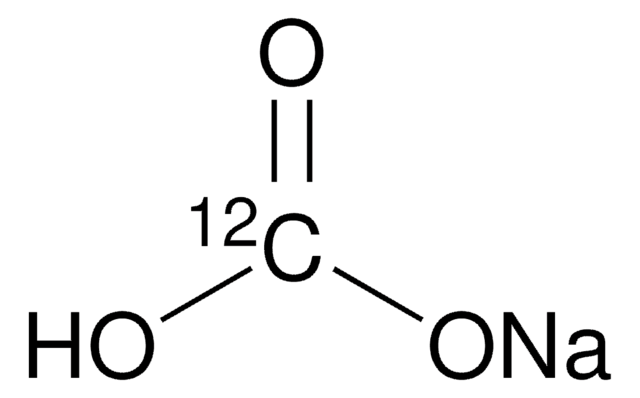1613655
USP
Bicarbonato di sodio
United States Pharmacopeia (USP) Reference Standard
Sinonimo/i:
Sodium hydrogen carbonate
About This Item
Prodotti consigliati
Grado
pharmaceutical primary standard
Famiglia di API
sodium bicarbonate
Produttore/marchio commerciale
USP
pH
8.3 (0.1 molfreshly prepared)
pKa (25 °C)
(1) 6.37, (2) 10.25 (carbonic acid)
Densità
2.16 g/mL at 25 °C (lit.)
applicazioni
pharmaceutical (small molecule)
Formato
neat
Stringa SMILE
[Na+].OC([O-])=O
InChI
1S/CH2O3.Na/c2-1(3)4;/h(H2,2,3,4);/q;+1/p-1
UIIMBOGNXHQVGW-UHFFFAOYSA-M
Cerchi prodotti simili? Visita Guida al confronto tra prodotti
Descrizione generale
Applicazioni
Risultati analitici
Altre note
Codice della classe di stoccaggio
13 - Non Combustible Solids
Classe di pericolosità dell'acqua (WGK)
WGK 1
Punto d’infiammabilità (°F)
Not applicable
Punto d’infiammabilità (°C)
Not applicable
Scegli una delle versioni più recenti:
Certificati d'analisi (COA)
Ci dispiace, ma al momento non ci sono COA disponibili online per questo prodotto.
Se ti serve aiuto, non esitare a contattarci Servizio Clienti
Possiedi già questo prodotto?
I documenti relativi ai prodotti acquistati recentemente sono disponibili nell’Archivio dei documenti.
I clienti hanno visto anche
Protocolli
Protocol for 1000 mg/L sulfate in water
Il team dei nostri ricercatori vanta grande esperienza in tutte le aree della ricerca quali Life Science, scienza dei materiali, sintesi chimica, cromatografia, discipline analitiche, ecc..
Contatta l'Assistenza Tecnica.







